In this article, VTJ will delve into the strategies and tips essential for cultivating an atmosphere that fosters enthusiasm, and engagement that can help students thrive both inside and outside the classroom.
What Is A Positive Learning Environment?
A positive learning environment is a space where students feel safe, comfortable, and supported in their academics. It is a place where they feel encouraged to participate, ask questions, and take risks while learning.
A positive learning environment encompasses more than just the physical setting; it embodies the holistic approach to education that considers the psychological, social, and emotional well-being of learners.
Explore More Teaching Tips: What Is the Learning Pyramid Model? (Elements & Importance)
Physical Environment
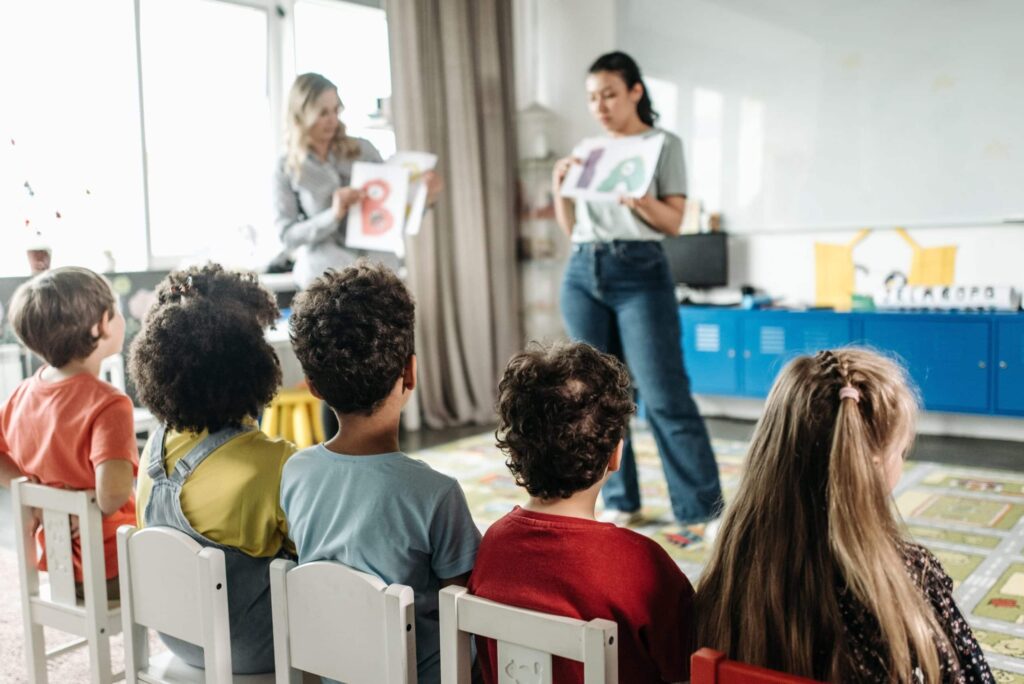
The physical environment of a learning space refers to the physical surroundings where learning takes place. It includes factors such as classroom layout, seating arrangements, lighting, temperature, and resources available.
A positive physical environment is one that is clean, organized, and well-maintained, providing a comfortable and safe space that enhances learning and minimizes distractions.
Discover Related Guides: Learning Gaps: Types & How Teachers Can Identify and Solve Them
Social Environment
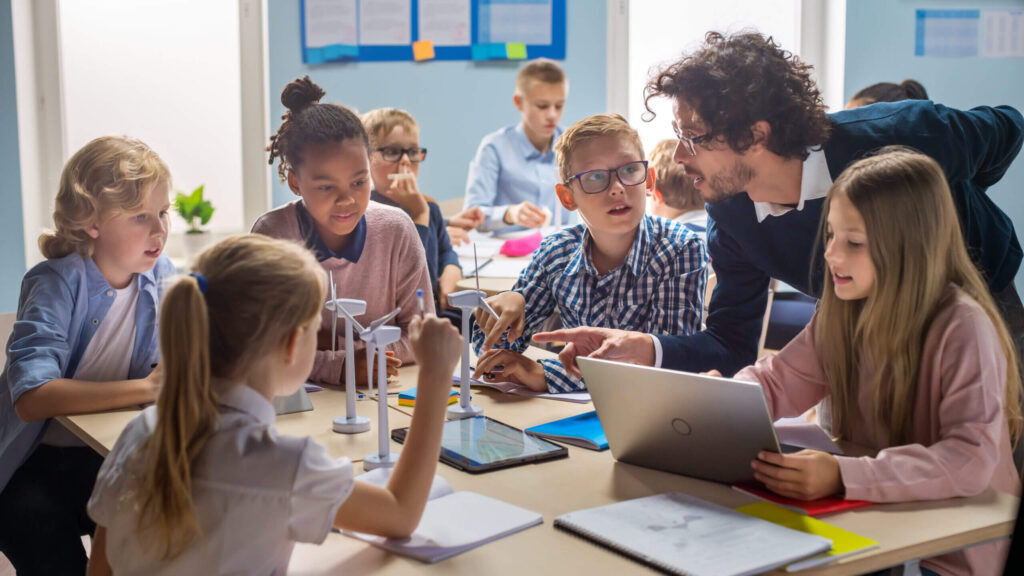
The social environment in a learning setting refers to the interactions and relationships among individuals, including students, teachers, and other members of the learning community.
A positive social environment is characterized by respectful and inclusive communication, collaboration, and support. It encourages active participation, cooperation, and the development of positive relationships, which contribute to a sense of belonging and motivation to learn.
Teachers should create many opportunities for students to work together, express their thoughts and opinions, and engage in healthy debate and discussion.
When students feel comfortable with one another, they are more likely to participate actively in class, resulting in a more dynamic and engaging learning experience.
Read more: 20 Qualities of a Good Teacher: How to Improve?
Emotional Environment
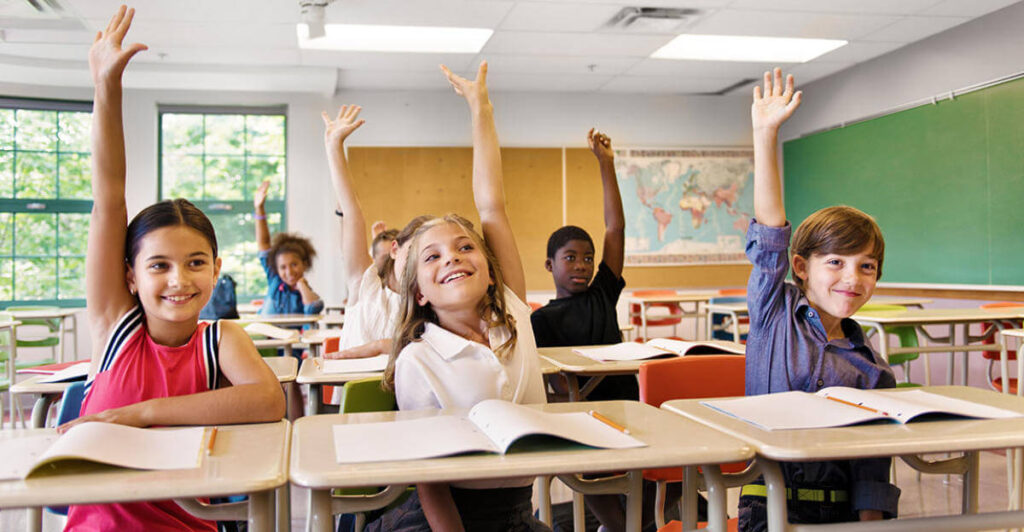
The emotional environment refers to the collective atmosphere and feelings prevailing within a particular space or context.
A positive emotional environment is characterized by trust, support, and a sense of belonging, fostering conditions that enable learners to feel secure, motivated, and open to the challenges of learning. On the contrary, a negative emotional environment may be marked by stress, anxiety, or a lack of psychological.
Teachers should be mindful of their students’ emotional needs and provide support when necessary. The emotional well-being of learners plays a pivotal role in their ability to learn, engage, and thrive academically.
Continue Learning: What Is PBIS (Positive Behavioral Interventions and Supports)?
What Is The Difference Between A Positive And Negative Learning Environment?
A positive learning environment is characterized by a sense of safety, inclusivity, and support, while a negative learning environment is one in which students feel stressed, anxious, and unsupported. In a negative learning environment, students may struggle to focus, participate in class, or feel motivated to learn.
Teachers play a significant role in preventing a negative learning environment by establishing clear expectations, being mindful of their teaching styles, and promoting positive behaviors amongst students.
Ultimately, a positive learning environment creates a setting that supports students’ overall academic and emotional well-being, leading to a more successful and fulfilling learning experience.
Explore More: 4 Reading Levels | How They Are Evaluated?
Why Is A Positive Learning Environment Important?
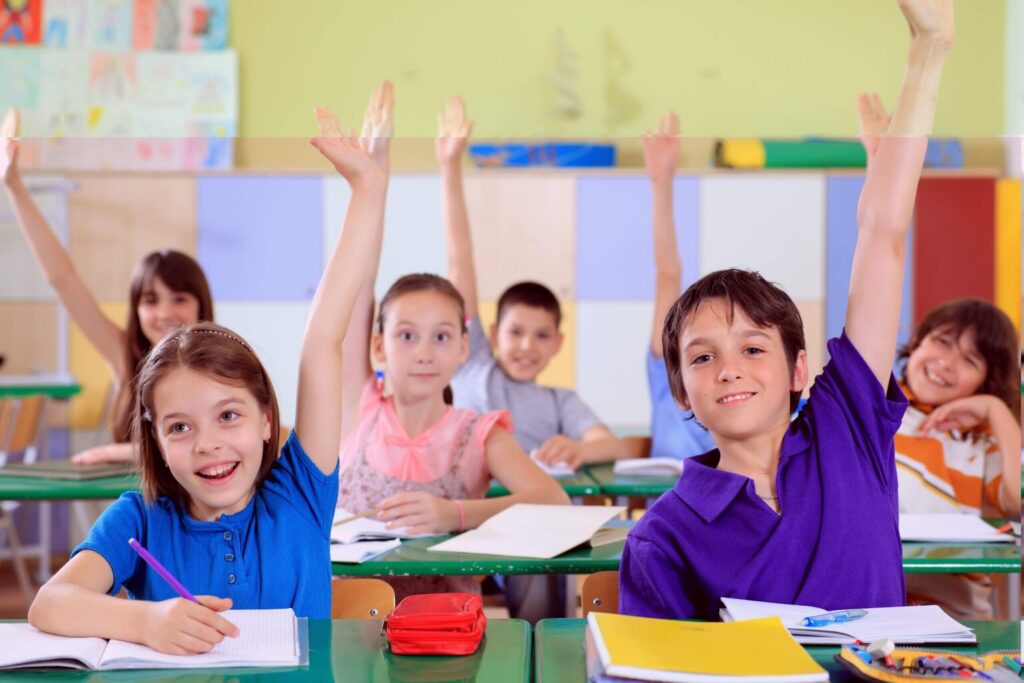
A positive learning environment is crucial because it plays a significant role in shaping students’ academic, social, and emotional development. Here are some reasons why a positive learning environment is important:
- Increased motivation: A positive learning environment helps students feel motivated and engaged in their studies. When students feel safe, respected, and supported, they are more likely to take academic risks and pursue their interests.
- Improved academic performance: When teachers create a supportive and engaging learning environment, students are more likely to participate actively in class, retain the information learned, and perform better on assessments and exams.
- Enhanced social skills: A positive learning environment fosters social interaction and helps students develop important social skills, such as communication, teamwork, and respect.
- Improved mental health: When students feel safe and supported in the classroom, they are less likely to experience anxiety and stress.
See More Strategies: What is Effective Teaching? 13 Effective Teaching Practices
Characteristics Of A Positive Classroom Environment
Be Welcoming
Creating a welcoming atmosphere in the classroom is a priority that goes hand-in-hand with the pursuit of knowledge. As educators, your goal is to ensure that each student feels not only acknowledged but genuinely valued.
Foster an environment where diversity is celebrated, questions are encouraged, and every voice matters.
Ask The Students
One key aspect is encouraging student voice, allowing them to express opinions, ideas, and questions. This can be facilitated through various means such as class discussions, surveys, and open-ended assignments.
Regularly seeking feedback from students about teaching methods and classroom dynamics not only demonstrates their opinions are valued but also allows for adjustments.
Moreover, involving students in decision-making processes, such as selecting project topics or establishing class norms, fosters a sense of ownership and responsibility.
Recognizing and incorporating students’ interests and passions into the curriculum also enhances engagement and relevance.
Personalise
Personalization in the classroom acknowledges the uniqueness of each student. This begins with recognizing and appreciating individual differences in strengths, learning styles, and backgrounds.
Offering flexibility in learning paths and assessments accommodates diverse needs, ensuring that students can showcase their understanding in ways that align with their strengths and interests.
Follow Routines
Following routines is an important characteristic of a positive classroom environment. Routines provide structure and predictability, which can help students feel safe and secure.
When students know what to expect and understand the expectations for different activities, it reduces anxiety and allows them to focus on learning.
Explore More Teaching Tips: 13 Types of Students in the Classroom and How to Deal with Them
Engage
Foster a learning environment where students are actively involved in the material and the learning process.
Utilize interactive teaching methods, such as group discussions, hands-on activities, and technology integration.
Vary instructional approaches cater to different learning styles, ensuring that each student has an opportunity to engage meaningfully.
Incorporate real-world examples and practical applications to make lessons relevant and interesting.
Be Flexible
Recognize that students have varying learning styles, paces, and needs. Being flexible in your teaching approach allows for adjustments based on the dynamics of the class. Adapt lessons based on student feedback and individual progress. Embrace changes in schedules when necessary and be open to alternative methods of instruction.
Build Resilience
Resilience refers to the ability to bounce back from challenges, setbacks, and failures. In a resilient classroom, students develop the skills and mindset to overcome obstacles, persevere through difficulties, and grow from their experiences.
Teachers can foster resilience by creating a supportive and encouraging atmosphere where mistakes are seen as opportunities for learning and growth. They can provide constructive feedback, offer guidance, and help students develop problem-solving skills.
Teachers can recognize and acknowledge students’ progress and achievements, no matter how small, to boost their confidence and motivation.
By focusing on the process of learning rather than just the end result, teachers can instill a sense of resilience in their students.
Read more: How to Use the Think-Pair-Share Activity to Engage Your Students
Reward
Reward is a concept that refers to the positive outcome or benefit that is received as a result of completing a task or achieving a goal.
It serves as an incentive to motivate individuals to engage in certain behaviors or actions.
Rewards can take various forms, such as tangible items, monetary compensation, and recognition, or even intangible benefits like personal satisfaction or a sense of accomplishment.
Recognizing and rewarding positive behavior encourages a culture of mutual respect and motivation. It reinforces the idea that effort and accomplishments are valued, contributing to a positive and encouraging learning environment.
Reach Out For Help
Reaching out for help is an important step in seeking support, guidance, or assistance when facing challenges or difficulties. It allows individuals to tap into the collective knowledge and experience of others, potentially leading to more effective problem-solving and personal growth.
Discover Related Guides: Leadership Styles in Education: 8 Effective Ways to Lead
Be Positive
Being positive as a teacher can have a significant impact on the classroom environment and students’ learning experience. Here are some ways teachers can cultivate positivity in the classroom:
- Language: Use positive language and affirmations to reinforce positive behaviors and accomplishments.
- Gratitude: Encourage students to express gratitude for things in their lives and show appreciation for their classmates.
- Attitude: Maintain a positive attitude, even during challenging situations, as this can impact the behavior and mood of students.
- Positive Relationships: Build positive relationships with students and foster a sense of belonging in the classroom.
- Encouragement: Encourage students to take risks, embrace challenges, and praise them for their efforts, as this can help develop a growth mindset.
Give Freedom
Empowering students with a sense of autonomy and freedom within appropriate boundaries is crucial for fostering independence and motivation. Provide opportunities for students to make choices in their learning, such as selecting project topics or determining study strategies.
Related Guides: What is Independent Learning and How It Works: A teacher’s guide
13 Strategies To Create A Positive Learning Environment In Your Classroom
1. Build Positive Relationships With Students And Parents
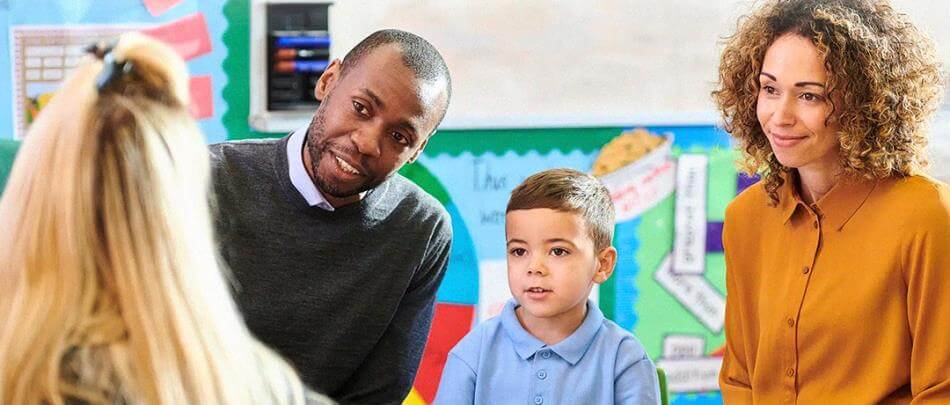
Building positive relationships with both students and parents is the cornerstone of a successful and harmonious learning environment. Forging connections with students involves more than imparting knowledge; it requires a genuine understanding of each student’s unique strengths, challenges, and aspirations.
Teachers can achieve this by actively engaging with students, demonstrating empathy, and creating a welcoming atmosphere in the classroom.
Additionally, maintaining open communication with parents is crucial. Regular updates on student progress, constructive feedback, and collaborative discussions help establish a strong partnership between teachers and parents.
See More Strategies: How to Teach Writing Skills to Students Effectively in 8 Simple Steps
2. Foster Student Connections

Teachers can facilitate this by incorporating team-building activities, encouraging group projects, and creating opportunities for students to share their experiences and perspectives. Addressing conflicts promptly and teaching effective communication skills also contribute to a positive peer dynamic.
3. Outline Classroom Rules For Positive Behavior
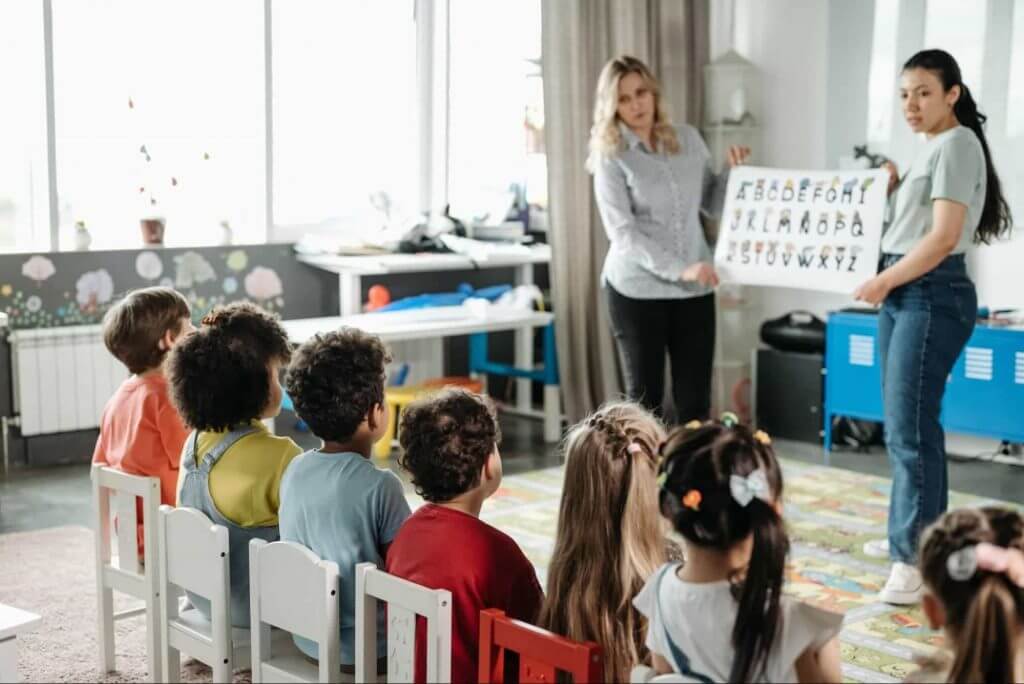
Firstly, a commitment to respect and courtesy is paramount, encouraging students to treat their peers and teachers with kindness.
Secondly, active participation is emphasized, fostering an environment where every student’s voice is valued.
Thirdly, punctuality and preparedness are highlighted to ensure a conducive learning atmosphere.
By adhering to these guidelines, students contribute not only to their own academic success but also to the creation of a positive and collaborative classroom culture.
Explore More Teaching Tips: Importance of Group Work in Teaching: Benefits & Examples
4. Use Positive Reinforcement
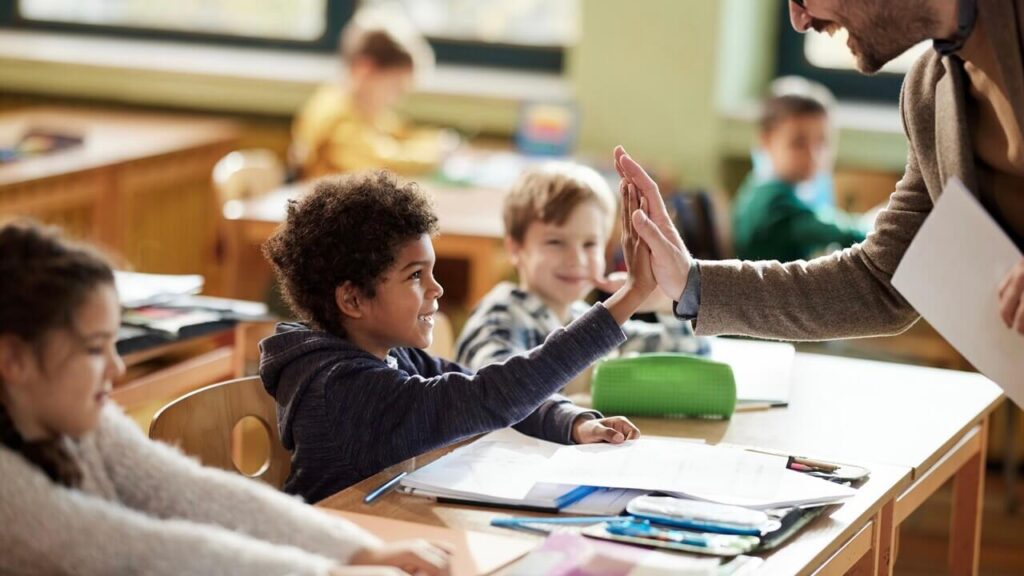
Instead of solely focusing on correcting negative behaviors, positive reinforcement accentuates the strengths and achievements of students. It can take various forms, such as verbal praise, certificates, or a system of points to rewards.
Positive reinforcement strategies, educators not only motivate students to be confident but also cultivate a sense of self-worth.
5. Ensure Content Is Culturally Relevant
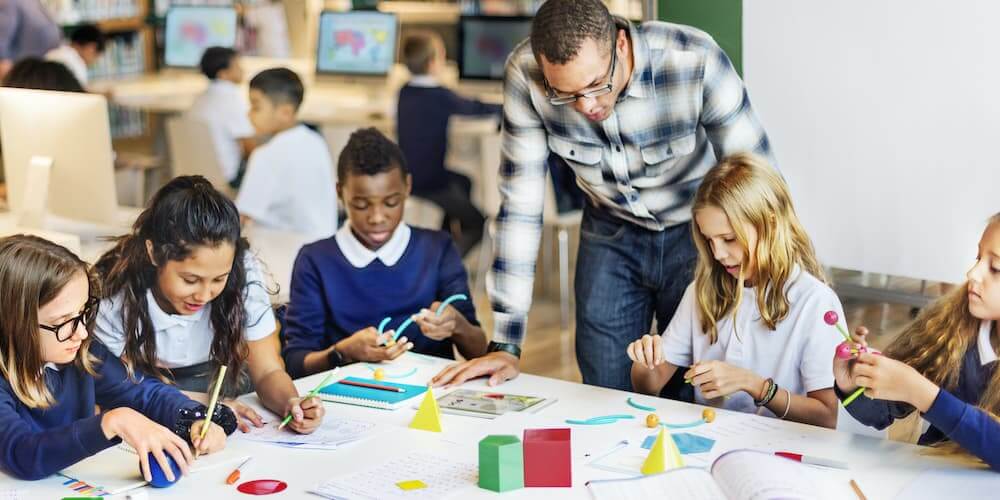
Culturally relevant content acknowledges the diverse backgrounds of the students in the classroom. Including diverse perspectives and representations in the curriculum can broaden students’ understanding and appreciation of different cultures.
Avoid creating biases in your content. Use inclusive language, respect, and embrace diversity within the classroom.
Consider integrating diverse cultures through multicultural literature, global issue discussions, and commemorating cultural events to provide students with a broad and multi-dimensional educational experience.
Encourage open communication, allowing students to share their perspectives and cultural experiences, thereby fostering mutual understanding and respect among classmates.
Discover Related Guides: Active vs. Passive Learning: Which One to Use?
6. Keep A Positive Mindset

Encourage a solutions-oriented approach that shifts the focus from problems to possibilities, emphasizing positive outcomes and growth opportunities. Utilize optimistic language that uplifts and motivates, framing challenges as stepping stones toward improvement.
7. Create A Comfortable Physical Environment
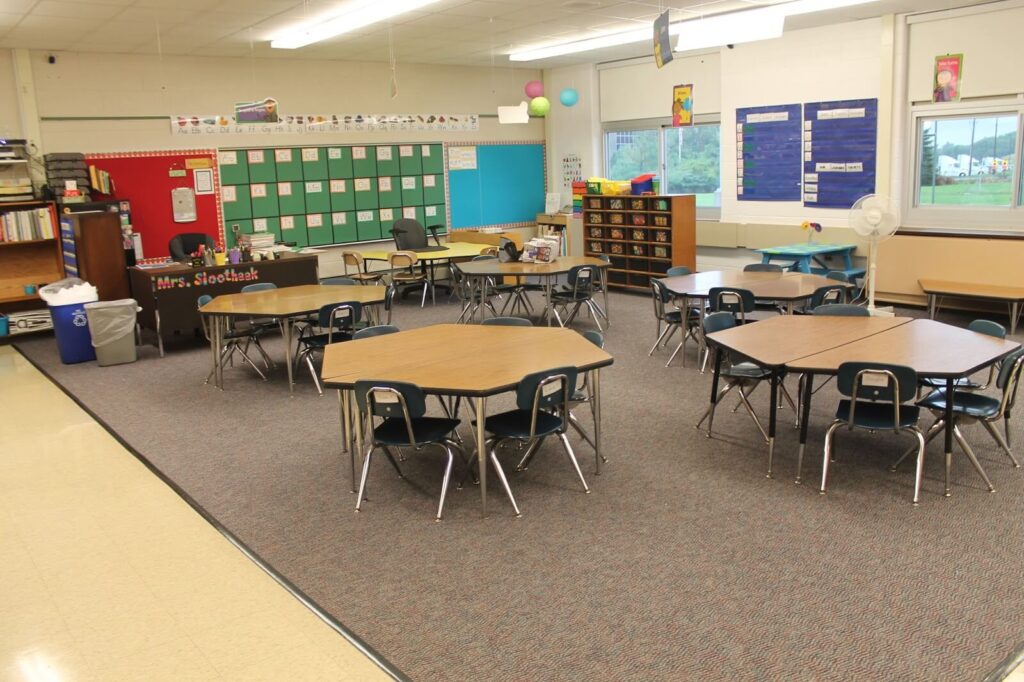
Consider the arrangement of furniture to facilitate ease of movement and interaction. Ensure proper lighting and ventilation, creating an atmosphere conducive to focus. Incorporate plants, and artwork to enhance the overall ambiance. Keep the environment organized and clutter-free to reduce distractions and create a calm setting for learning.
8. Stay Informed On Educational Research

Engage with professional development opportunities, attend conferences, and participate in workshops to update advancements in the field. Collaborate with colleagues to share insights and experiences related to effective teaching strategies. Embrace a mindset of continuous learning, implementing evidence-based practices in the classroom.
By staying informed on educational research, educators can make informed decisions, adapt to evolving educational landscapes, and provide students with the most effective learning experiences.
Read more: Lesson Objectives (Learning Objectives): How to Write in 4 Steps
9. Prioritize Social-Emotional Learning
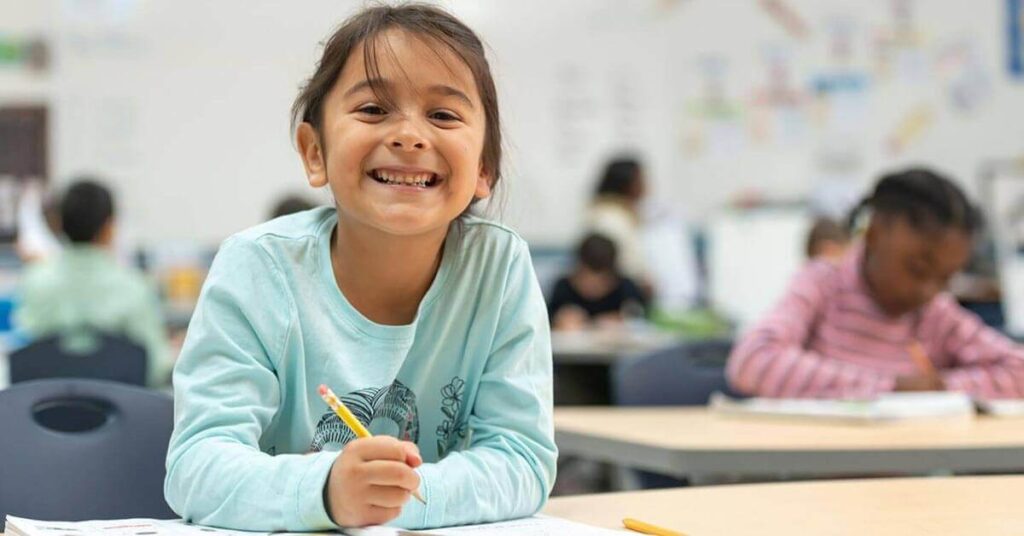
Prioritizing social-emotional learning (SEL) is essential for the holistic development of students. By focusing on SEL, educators can help students build self-awareness, develop a positive learning environment, manage their emotions, and make responsible decisions.
10. Plan Lessons With Motivation In Mind

Understand the interests, preferences, and learning styles of your students to tailor lessons that resonate with them.
Incorporate real-world examples, interactive activities, and technology to make lessons more dynamic and relevant. Set clear goals and objectives, providing students with a sense of purpose and direction. Integrate opportunities for student choice and autonomy, allowing them to take ownership of their learning. Foster a positive and encouraging learning environment that celebrates achievements and encourages perseverance.
Continue Learning: Why Students Get Bored & How to Engage Bored Students in the Class
11. Provide Personalized Feedback On Assignments

Instead of generic comments, take the time to provide specific, constructive feedback tailored to each student’s strengths and areas for improvement. Acknowledge their efforts and highlight what they’ve done well. Additionally, offer guidance on how they can enhance their skills or understanding in specific areas.
See More Strategies: Meaningful Feedback for Students: Importance, Tips and Examples
12. Share The Love
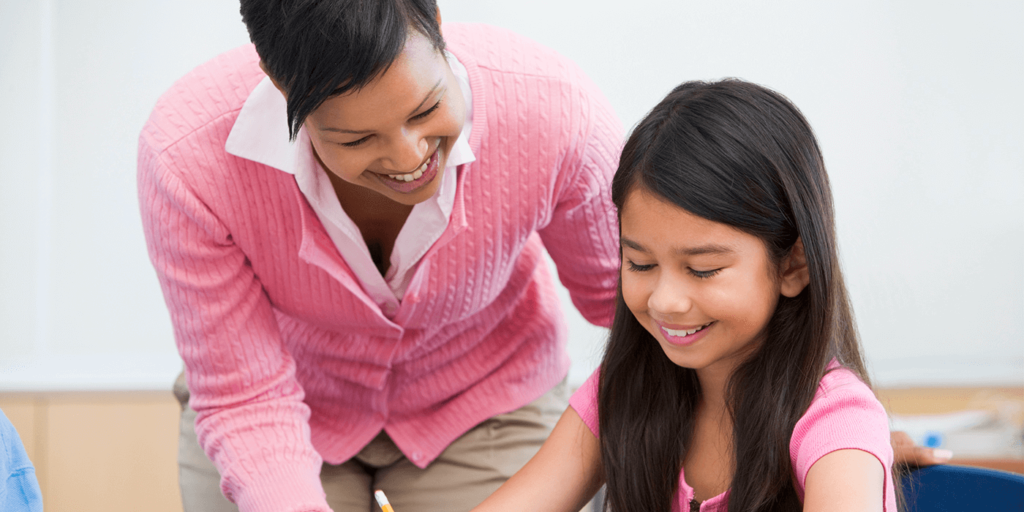
Recognize and commend acts of kindness, teamwork, or notable improvements in academics or behavior. Utilize various methods to express your appreciation, such as verbal praise, written notes, or recognition in front of the class.
13. Find time for fun!
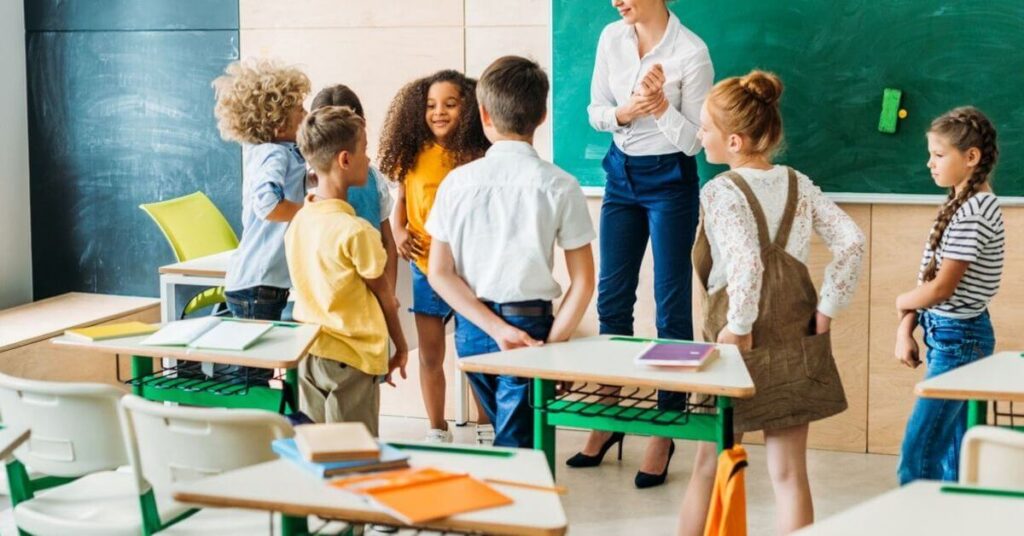
While academics are important, it’s equally crucial to find a balance between work and play. Make sure to allocate time for activities that bring students joy and relaxation. Integrate games, interactive activities, or creative projects that make learning enjoyable. Consider occasional breaks or energizing activities to refresh students and maintain their enthusiasm.
Read more: 6 Types of Assessment in Education & How to Use Them
A lighthearted and enjoyable classroom environment not only enhances the overall student experience but also positively influences their attitude toward learning.






